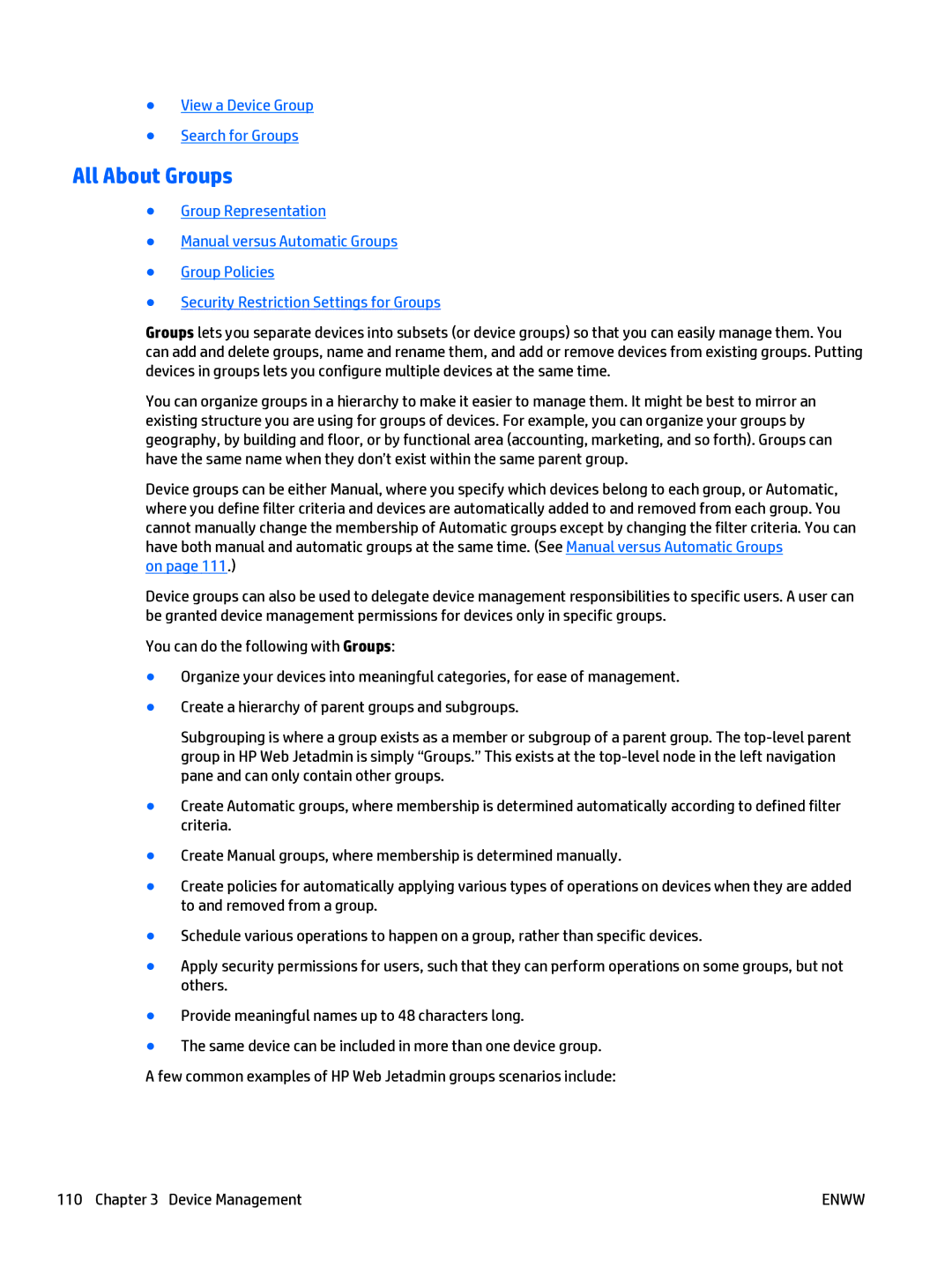●View a Device Group
●Search for Groups
All About Groups
●Group Representation
●Manual versus Automatic Groups
●Group Policies
●Security Restriction Settings for Groups
Groups lets you separate devices into subsets (or device groups) so that you can easily manage them. You can add and delete groups, name and rename them, and add or remove devices from existing groups. Putting devices in groups lets you configure multiple devices at the same time.
You can organize groups in a hierarchy to make it easier to manage them. It might be best to mirror an existing structure you are using for groups of devices. For example, you can organize your groups by geography, by building and floor, or by functional area (accounting, marketing, and so forth). Groups can have the same name when they don’t exist within the same parent group.
Device groups can be either Manual, where you specify which devices belong to each group, or Automatic, where you define filter criteria and devices are automatically added to and removed from each group. You cannot manually change the membership of Automatic groups except by changing the filter criteria. You can have both manual and automatic groups at the same time. (See Manual versus Automatic Groups
on page 111.)
Device groups can also be used to delegate device management responsibilities to specific users. A user can be granted device management permissions for devices only in specific groups.
You can do the following with Groups:
●Organize your devices into meaningful categories, for ease of management.
●Create a hierarchy of parent groups and subgroups.
Subgrouping is where a group exists as a member or subgroup of a parent group. The
●Create Automatic groups, where membership is determined automatically according to defined filter criteria.
●Create Manual groups, where membership is determined manually.
●Create policies for automatically applying various types of operations on devices when they are added to and removed from a group.
●Schedule various operations to happen on a group, rather than specific devices.
●Apply security permissions for users, such that they can perform operations on some groups, but not others.
●Provide meaningful names up to 48 characters long.
●The same device can be included in more than one device group.
A few common examples of HP Web Jetadmin groups scenarios include:
110 Chapter 3 Device Management | ENWW |
